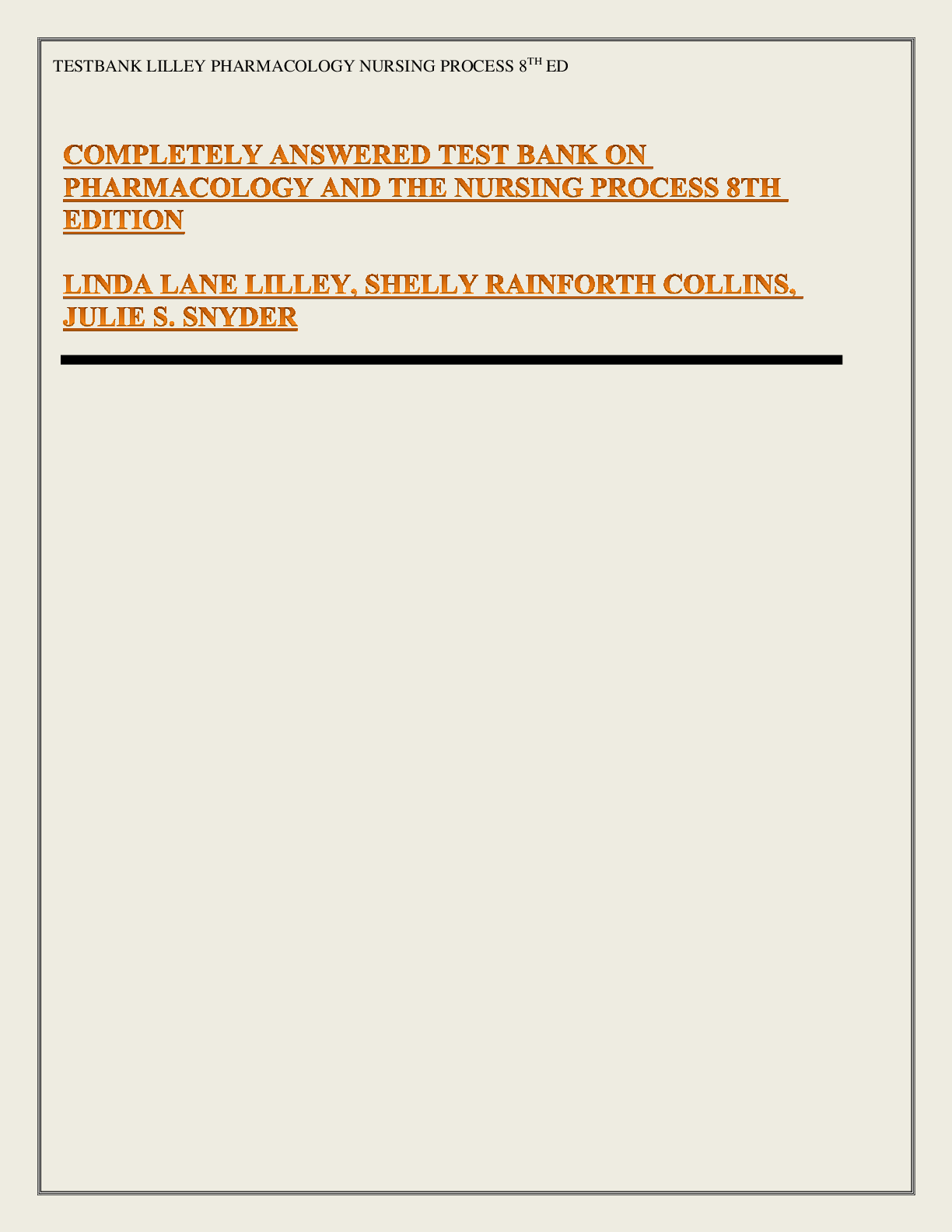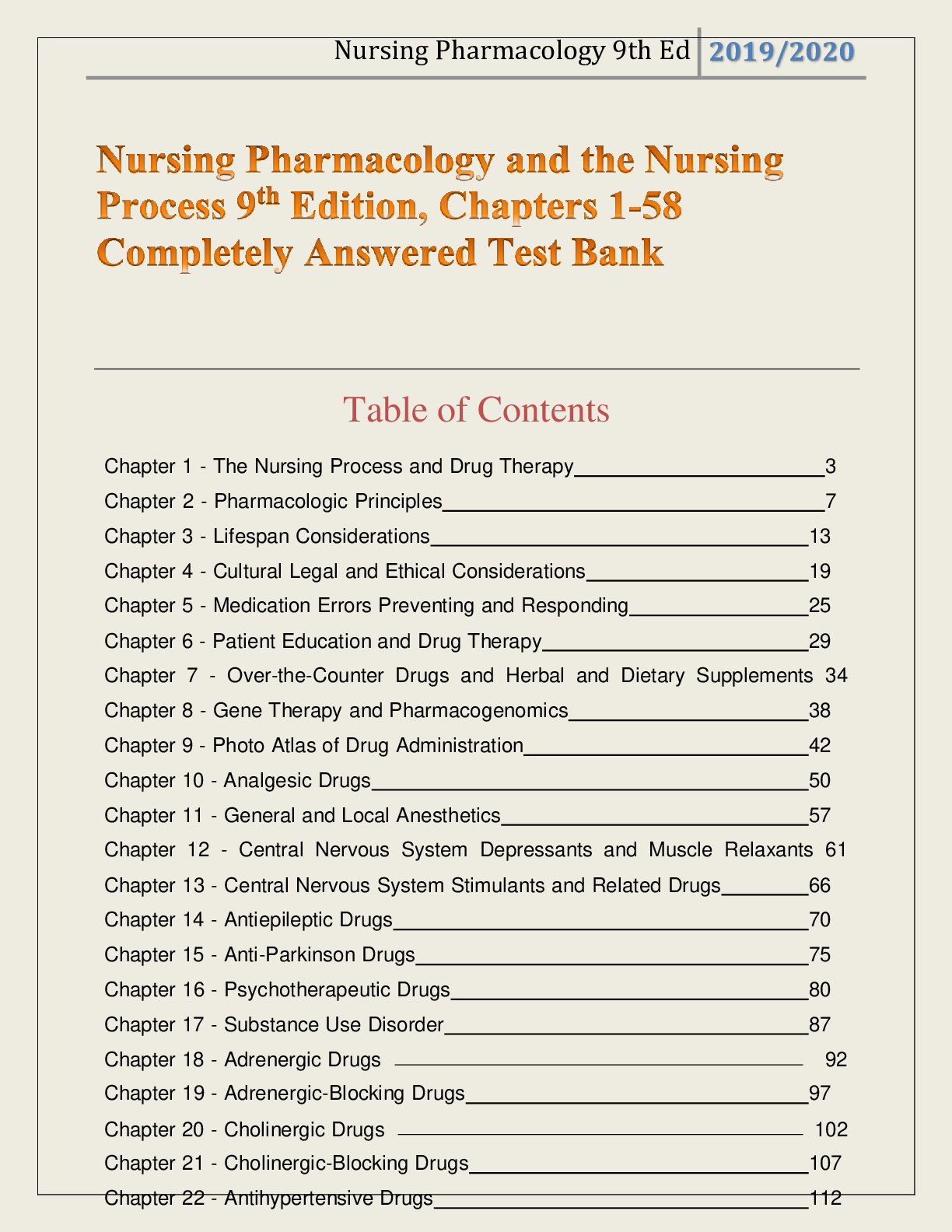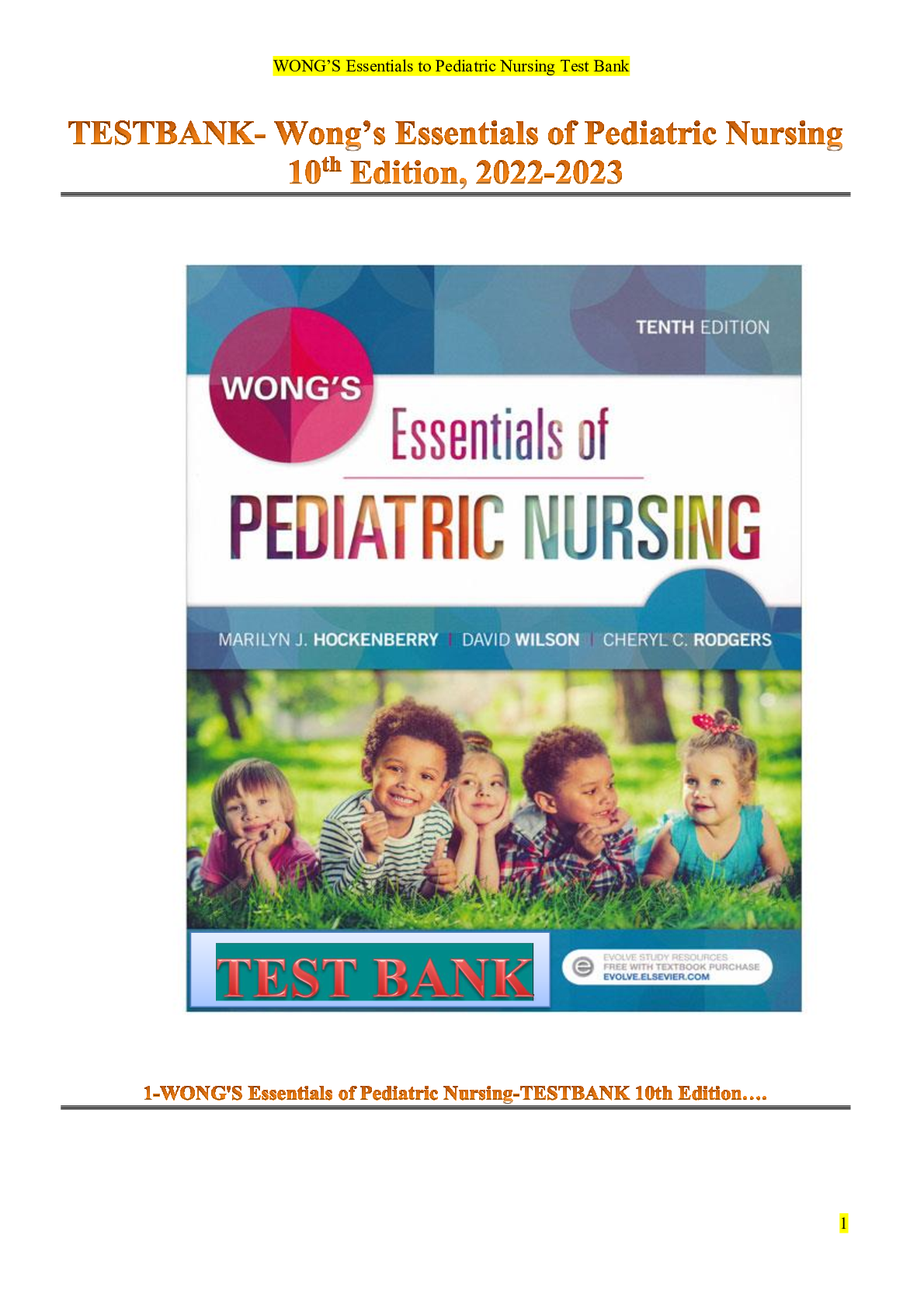Health Assesment answered test bank
Document Content and Description Below
Health Assesment nswered test bank Chapter 01: Evidence-Based Assessment 1. After completing an initial assessment of a patient, the nurse has charted that his respirations are eupneic and his ... pulse is 58 beats per minute. These types of data would be: 2. A patient tells the nurse that he is very nervous, is nauseated, and “feels hot.” These types of data would be: 3. The patient’s record, laboratory studies, objective data, and subjective data combine to form the: 4. When listening to a patient’s breath sounds, the nurse is unsure of a sound that is heard. The nurse’s next action should be to: 5. The nurse is conducting a class for new graduate nurses. During the teaching session, the nurse should keep in mind that novice nurses, without a background of skills and experience from which to draw, are more likely to make their decisions using: 6. Expert nurses learn to attend to a pattern of assessment data and act without consciously labeling it. These responses are referred to as: 7. The nurse is reviewing information about evidence-based practice (EBP). Which statement best reflects EBP? 8. The nurse is conducting a class on priority setting for a group of new graduate nurses. Which is an example of a first-level priority problem? 9. When considering priority setting of problems, the nurse keeps in mind that second-level priority problems include which of these aspects? 10. Which critical thinking skill helps the nurse see relationships among the data? 11. The nurse knows that developing appropriate nursing interventions for a patient relies on the appropriateness of the __________ diagnosis. 12. The nursing process is a sequential method of problem solving that nurses use and includes which steps? 13. A newly admitted patient is in acute pain, has not been sleeping well lately, and is having difficulty breathing. How should the nurse prioritize these problems? 14. Which of these would be formulated by a nurse using diagnostic reasoning? 15. Barriers to incorporating EBP include: 16. What step of the nursing process includes data collection by health history, physical examination, and interview? 17. During a staff meeting, nurses discuss the problems with accessing research studies to incorporate evidence-based clinical decision making into their practice. Which suggestion by the nurse manager would best help these problems? 18. When reviewing the concepts of health, the nurse recalls that the components of holistic health include which of these? 19. The nurse recognizes that the concept of prevention in describing health is essential because: 20. The nurse is performing a physical assessment on a newly admitted patient. An example of objective information obtained during the physical assessment includes the: 21. A visiting nurse is making an initial home visit for a patient who has many chronic medical problems. Which type of data base is most appropriate to collect in this setting? 22. Which situation is most appropriate during which the nurse performs a focused or problem-centered history? 23. A patient is at the clinic to have her blood pressure checked. She has been coming to the clinic weekly since she changed medications 2 months ago. The nurse should: 24. A patient is brought by ambulance to the emergency department with multiple traumas received in an automobile accident. He is alert and cooperative, but his injuries are quite severe. How would the nurse proceed with data collection? 25. A 42-year-old patient of Asian descent is being seen at the clinic for an initial examination. The nurse knows that including cultural information in his health assessment is important to: 26. In the health promotion model, the focus of the health professional includes: 27. The nurse has implemented several planned interventions to address the nursing diagnosis of acute pain. Which would be the next appropriate action? 28. Which statement best describes a proficient nurse? A proficient nurse is one who: MULTIPLE RESPONSE 1. The nurse is reviewing data collected after an assessment. Of the data listed below, which would be considered related cues that would be clustered together during data analysis? Select all that apply. MATCHING 2. Put the following patient situations in order according to the level of priority. a. Chapter 04: The Complete Health History 1. The nurse is preparing to conduct a health history. Which of these statements best describes the purpose of a health history? 2. When the nurse is evaluating the reliability of a patient’s responses, which of these statements would be correct? The patient: 3. A 59-year-old patient tells the nurse that he has ulcerative colitis. He has been having “black stools” for the last 24 hours. How would the nurse best document his reason for seeking care? 4. A patient tells the nurse that she has had abdominal pain for the past week. What would be the nurse’s best response? 5. A 29-year-old woman tells the nurse that she has “excruciating pain” in her back. Which would be the nurse’s appropriate response to the woman’s statement? 6. In recording the childhood illnesses of a patient who denies having had any, which note by the nurse would be most accurate? 7. A female patient tells the nurse that she has had six pregnancies, with four live births at term and two spontaneous abortions. Her four children are still living. How would the nurse record this information? 8. A patient tells the nurse that he is allergic to penicillin. What would be the nurse’s best response to this information? 9. The nurse is taking a family history. Important diseases or problems about which the patient should be specifically asked include: 10. The review of systems provides the nurse with: 11. Which of these statements represents subjective data the nurse obtained from the patient regarding the patient’s skin? 12. The nurse is obtaining a history from a 30-year-old male patient and is concerned about health promotion activities. Which of these questions would be appropriate to use to assess health promotion activities for this patient? 13. Which of these responses might the nurse expect during a functional assessment of a patient whose leg is in a cast? 14. In response to a question about stress, a 39-year-old woman tells the nurse that her husband and mother both died in the past year. Which response by the nurse is most appropriate? 15. In response to a question regarding the use of alcohol, a patient asks the nurse why the nurse needs to know. What is the reason for needing this information? 16. The mother of a 16-month-old toddler tells the nurse that her daughter has an earache. What would be an appropriate response? 17. During an assessment of a patient’s family history, the nurse constructs a genogram. Which statement best describes a genogram? 18. A 5-year-old boy is being admitted to the hospital to have his tonsils removed. Which information should the nurse collect before this procedure? 19. As part of the health history of a 6-year-old boy at a clinic for a sports physical examination, the nurse reviews his immunization record and notes that his last measles-mumps-rubella (MMR) vaccination was at 15 months of age. What recommendation should the nurse make? 20. In obtaining a review of systems on a “healthy” 7-year-old girl, the health care provider knows that it would be important to include the: 21. When the nurse asks for a description of who lives with a child, the method of discipline, and the support system of the child, what part of the assessment is being performed? 22. The nurse is obtaining a health history on an 87-year-old woman. Which of the following areas of questioning would be most useful at this time? 23. The nurse is performing a review of systems on a 76-year-old patient. Which of these statements is correct for this situation? 24. A 90-year-old patient tells the nurse that he cannot remember the names of the medications he is taking or for what reason he is taking them. An appropriate response from the nurse would be: 25. The nurse is performing a functional assessment on an 82-year-old patient who recently had a stroke. Which of these questions would be most important to ask? 26. The nurse is preparing to do a functional assessment. Which statement best describes the purpose of a functional assessment? ..................................................................continued........................................................... [Show More]
Last updated: 1 year ago
Preview 1 out of 23 pages
Instant download
.png)
Buy this document to get the full access instantly
Instant Download Access after purchase
Add to cartInstant download
Reviews( 0 )
Document information
Connected school, study & course
About the document
Uploaded On
Jan 14, 2021
Number of pages
23
Written in
Additional information
This document has been written for:
Uploaded
Jan 14, 2021
Downloads
0
Views
37

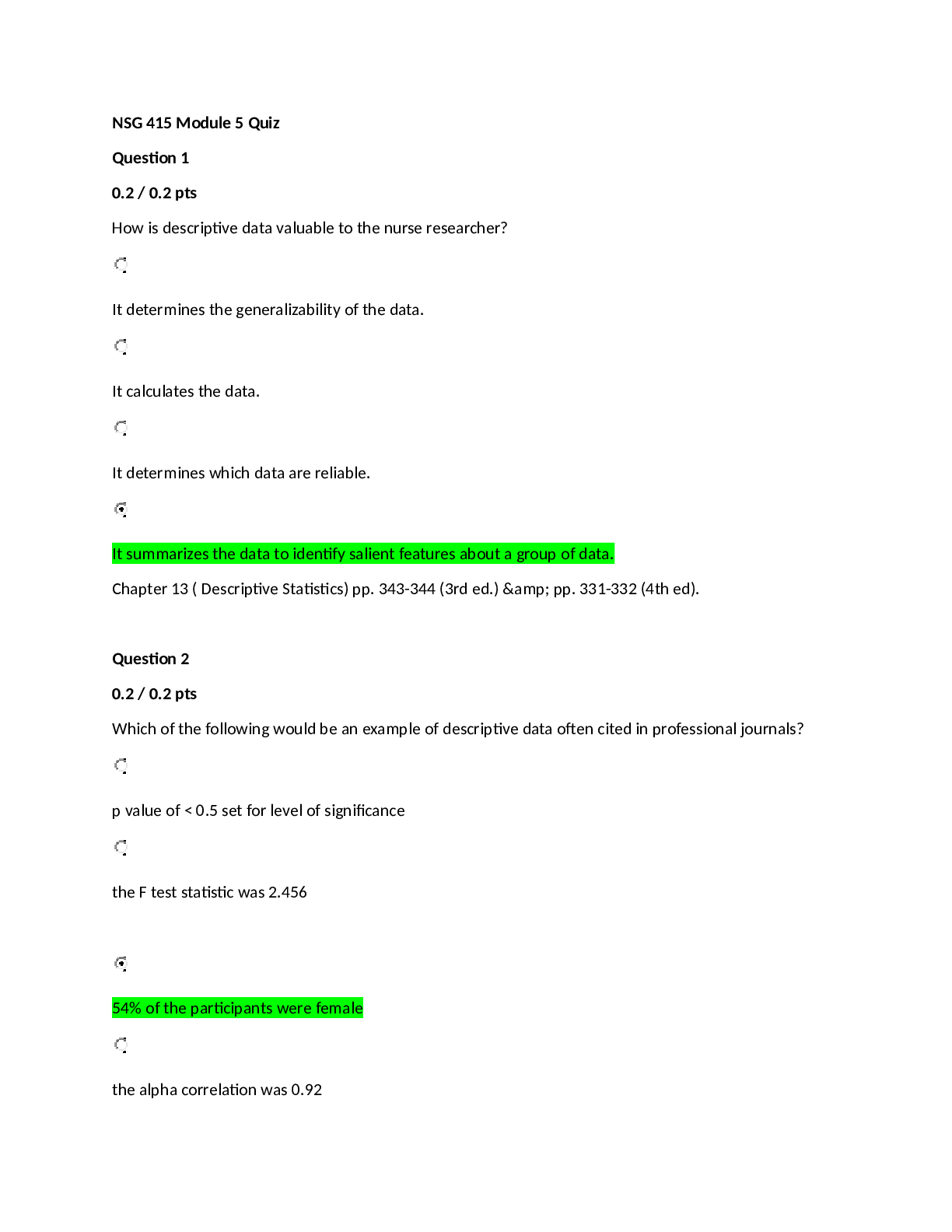


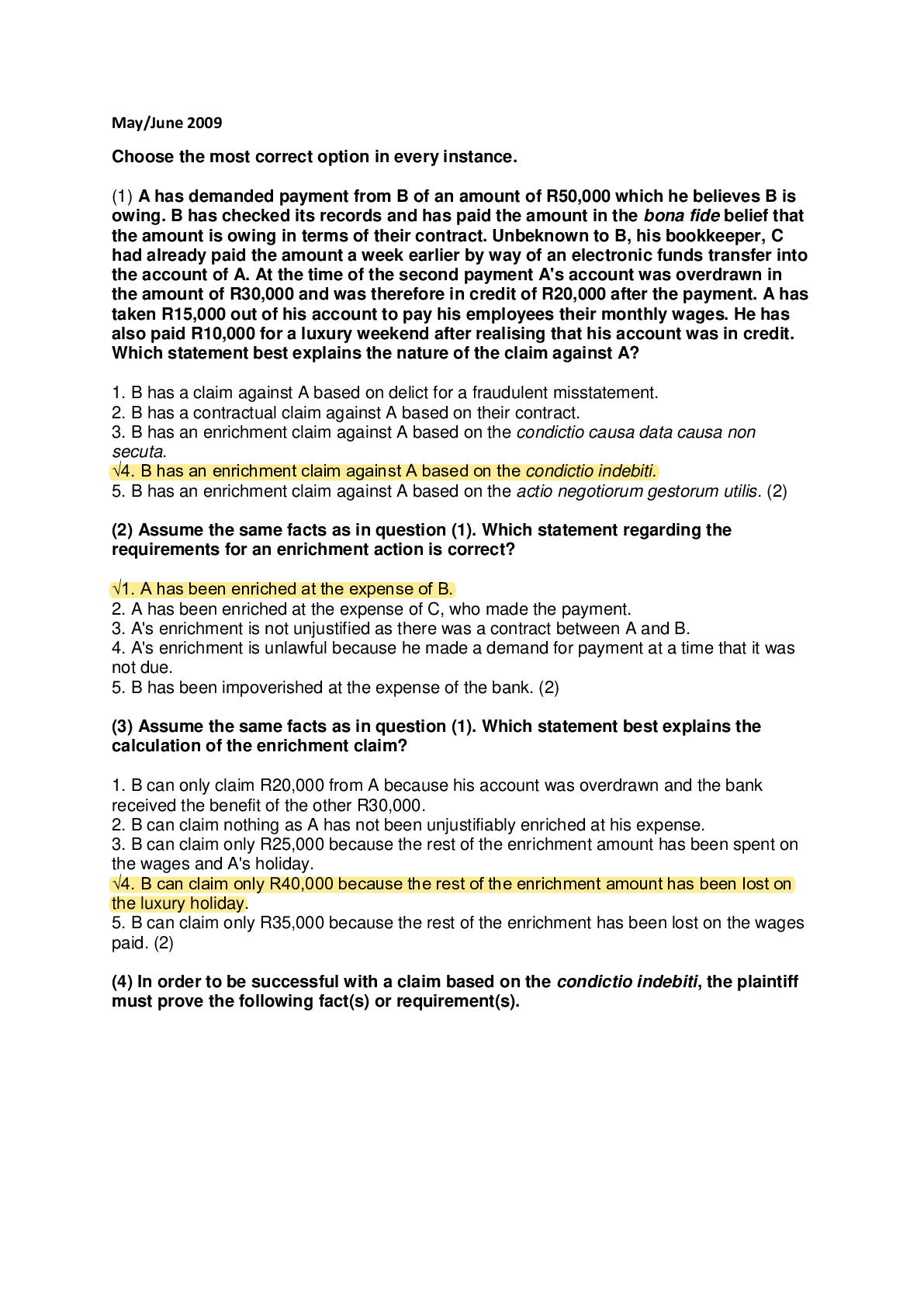
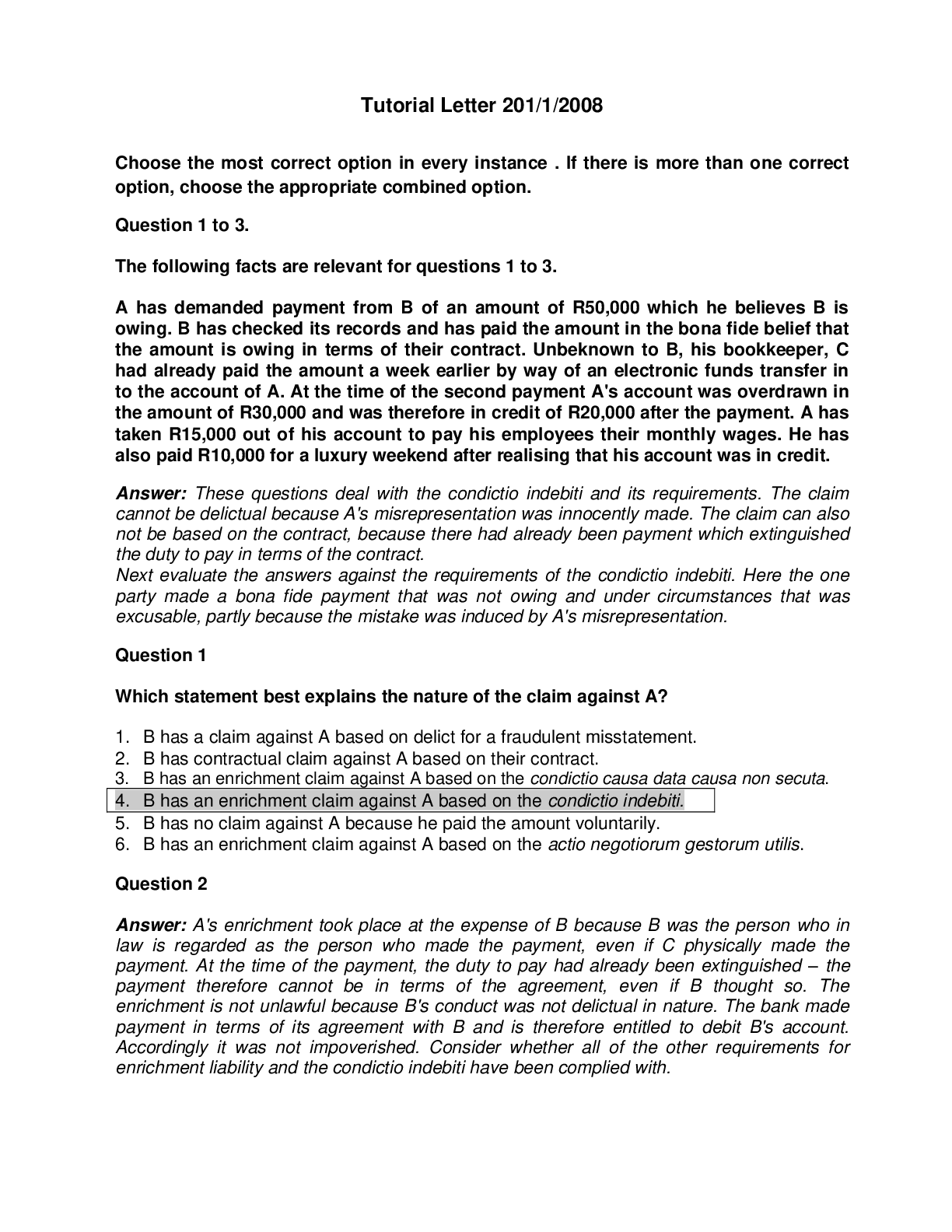
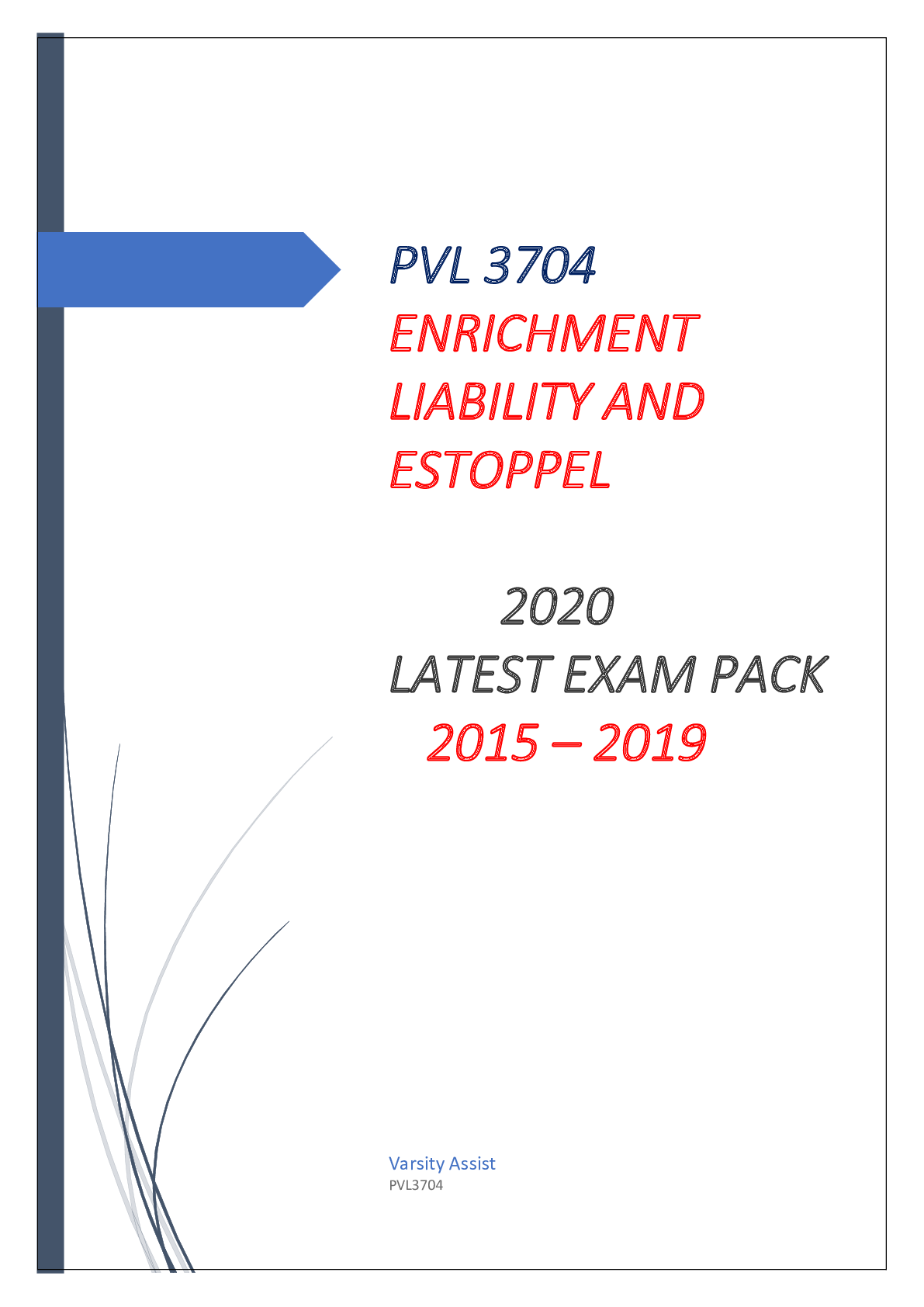


.png)
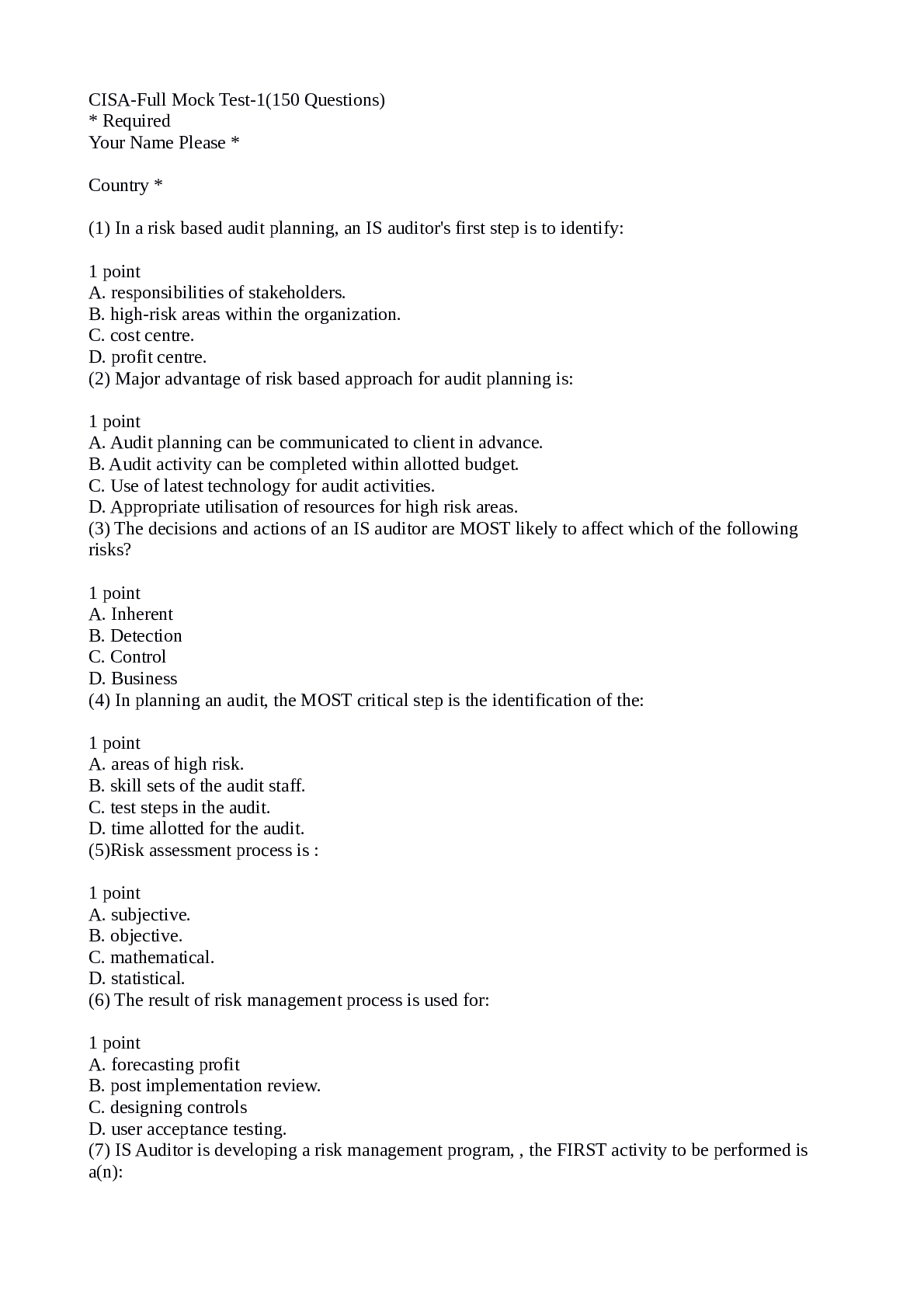
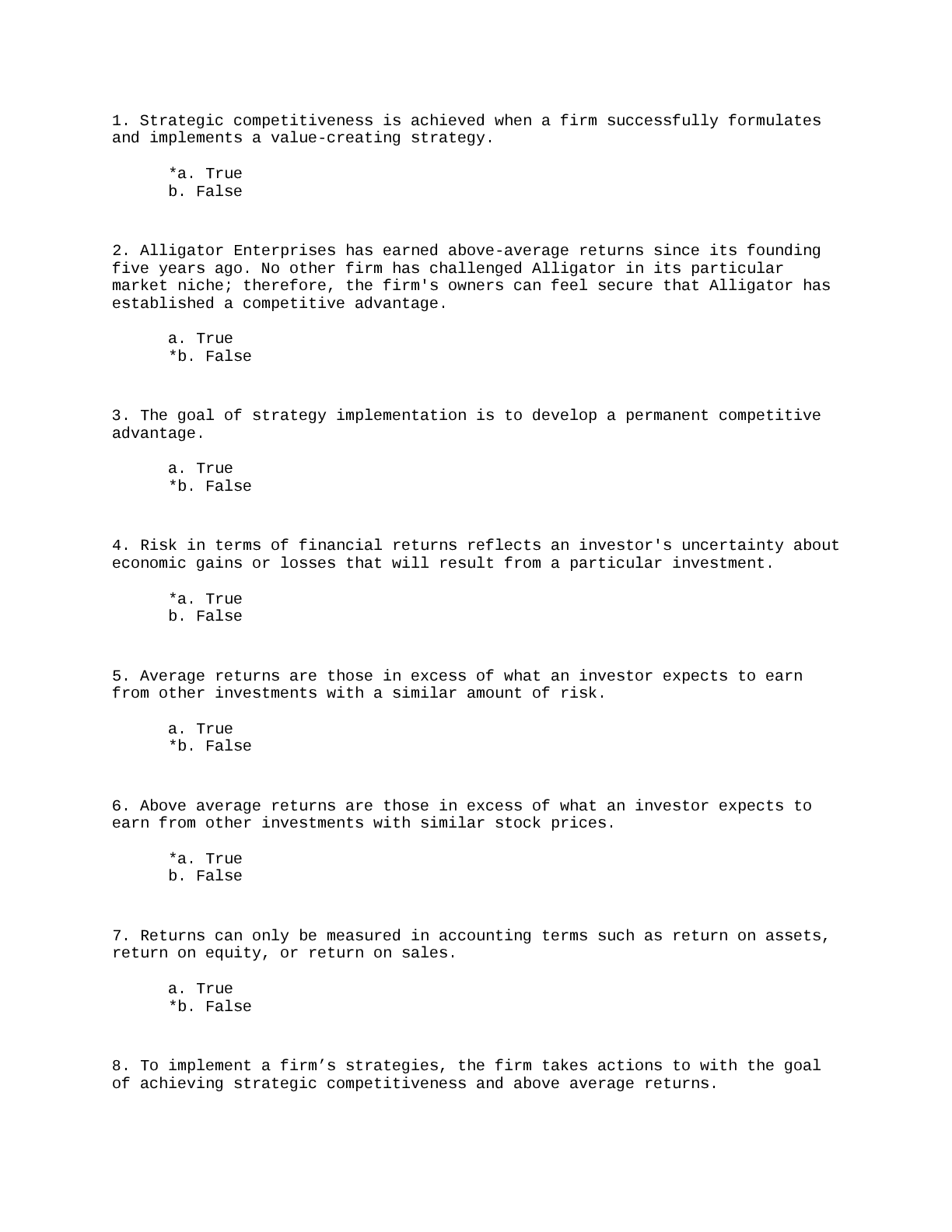
.png)
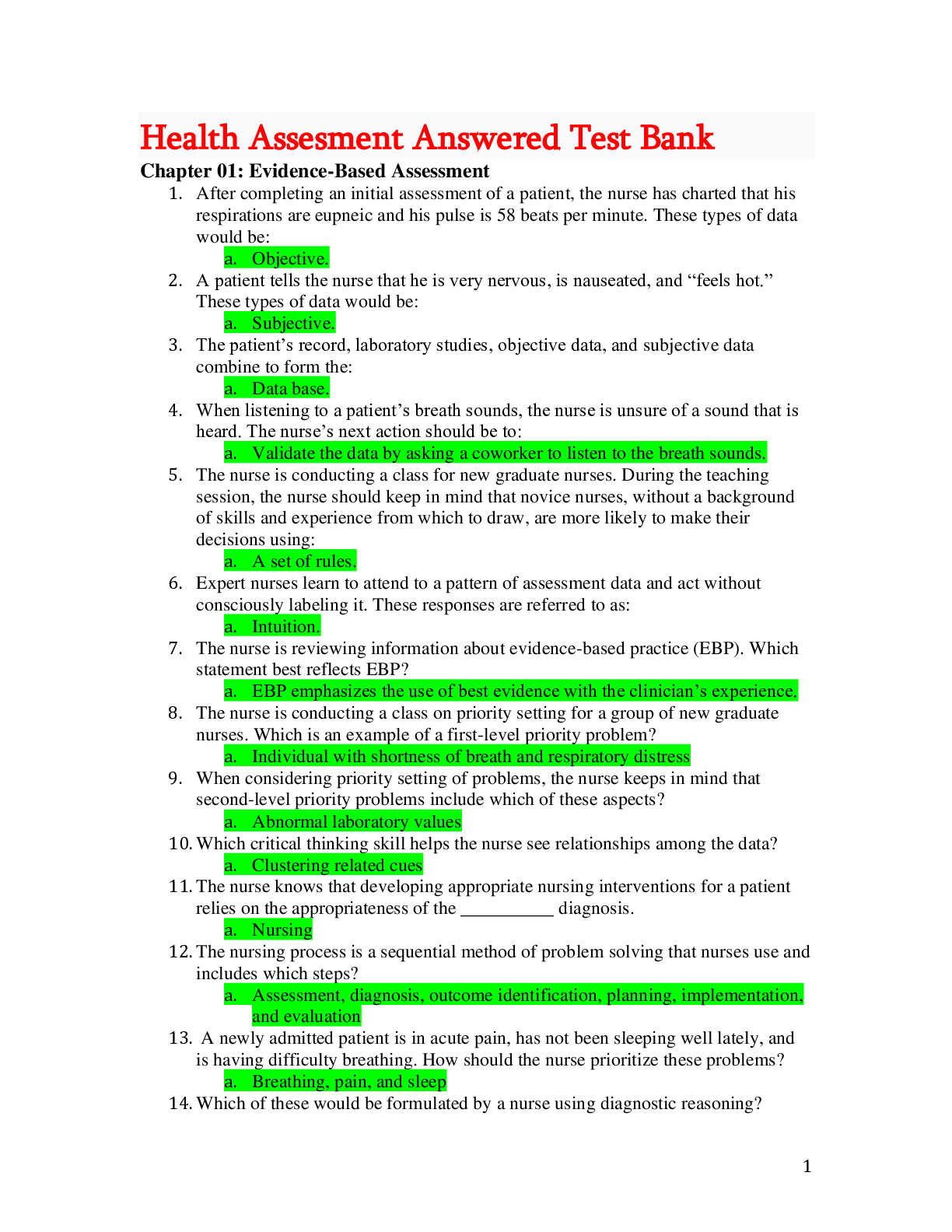
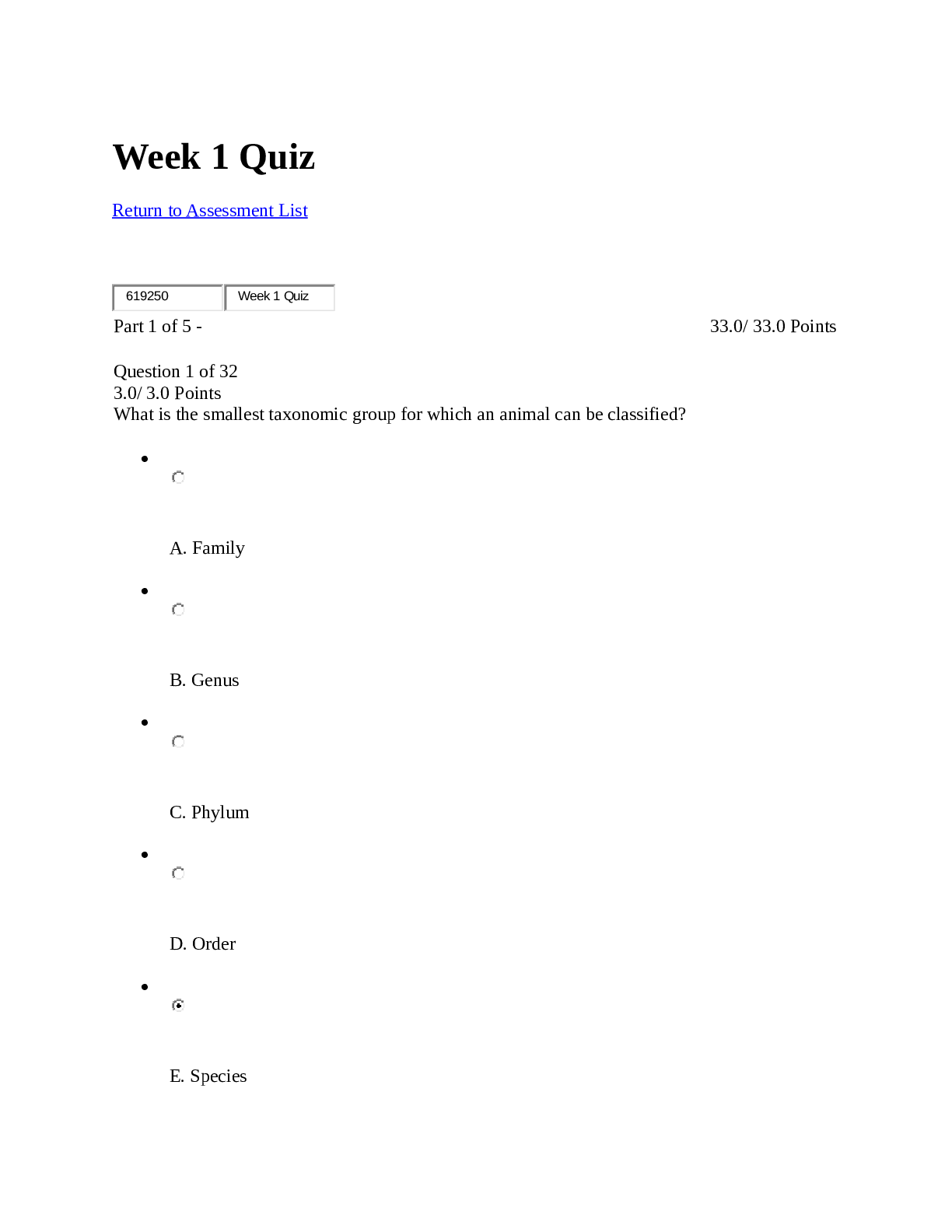
.png)
 (1).png)

.png)

